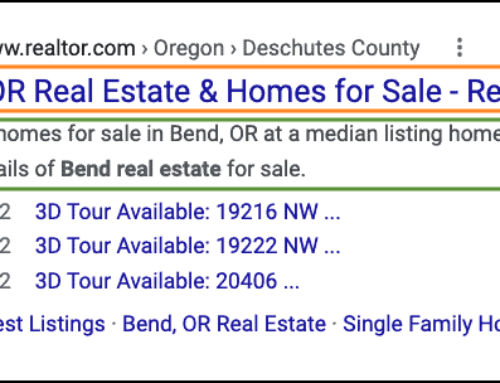This is a working document that will expand over time. In it, we will share recommendations, best practices, discuss alternatives, present challenges and solutions, and more.
URL Changes and Redirects
Any time we change a URL by even a single character, we want to introduce a redirect taking google/the user from the old URL to the new URL. Here’s an example of a URL change (with the altered text in orange):
Original: https://abc.com/product1
Changed to: https://abc.com/?product=1
However, here are some things to be mindful of when considering URL changes:
- Avoid Large Numbers of Redirects when Possible – Redirects are searched first to ensure users are taken to the appropriate page. ALl that happens quickly when there are tens or hundreds of redirects, however, the more redirects we add the longer that process takes, adding precious time to the page speed timings. When 10000+ redirects are in place, the speed impact can be considerable, and it’s always wise to avoid having large numbers of redirects since we all speed plays a significant factor in organic search performance.
- Consider Need for URL Changes – For the above reason, maintaining an existing URL structure is often the best option.
- Avoid redirect changes – It’s important to avoid one URL redirecting to another, then redirecting again. That’s considered poor redirect hygiene, and will have a negative impact on organic performance.
- Update Canonicals – Canonicals need to be updated to show the new URLs, not the old ones. This is often overlooked. We can help flush these out using some of the tools at our disposal.
Google Analytics (GA) / Google Tag manager (GTM) / Google Search Console (GSC)
When working with Google Analytics, Google Tag Manager, and Google Search Console bear these best practices in mind:
- Every page should be recording traffic using GA
- Use Event Tracking to (a) record interactions with buttons, links, and other actions on the page, and (b) signal to google that users are engaged (very important). For example, when event tracking is associated with the play button on a video predominantly featured on a page, a click of that video is likely, and each click counts as engagement in google’s eyes.
- Implementing GA as a tag within GTM is a good practice.
- Limit access to GTM to only those resources who require access. Do not grant many users edit privileges.
- GTM must be maintained to minimize page speed slowness which can result when old tags are left without cleanup, when conflicting or duplicate tags are firing.
- GA and GSC should always be linked as it enables greater access to data in both systems.
- GSC should be watched daily or weekly, and issues should be addressed. When issues are resolved, ask GSC to verify the fixes – it signals to google that issues are being worked on.
Canonicals
Definition: Canonical tags are used to inform google which version of a page you wish to appear in search results, and to consolidate link equity from duplicate pages.
- As a general rule, we want every page to have a default canonical that is self-referencing. In other words, each page should canonical to itself as a starting point.
- When identical pages exist on a website or partner website, canonicals should be used to signal that the copies should not be indexed, or stated differently canonicals will signal which version of the page is the master (source of record).
Schema
Schema markup is the language of search engines, categorizing pages into a unique vocabulary and set of services, products, content types, etc.
- Use Schema Markup when possible, especially when the page is focused on a particular Product or Service
- For products (e.g. cakes), we should use Product markup (more info)
- For local businesses (e.g. grocery stores), we should use LocalBusiness (more info)
- Schema can be incorrectly implemented, and should be tested (link to resource) to ensure all is functioning as it should
Page Titles, H1, h2s, h3s
- Every page needs one and only one H1 – just one opening tag and one closing tag (<h1> Phrase Here </h1>)
- I’d recommend that the H1 and Page Title match or are close to matching (minus the ‘| {Site Name}’ in the page title).
- Reserve the H1, h2, h3, and h4 tags for SEO purposes – these should not be used for styling purposes
- H tags should reflect the architecture of the page like this basic example:
- H1
- h2
- h2
- h3
- h3
- h3
- h3
- h2
- h3
- h3
- h2
- Etc
- H1
- Barring any objections from you, we’d like to provide input on the core page designs of the site prior to development, and we’d like to audit the pages prior to making the site live to ensure the best possible SEO results.
Website Speed is an Important Factor
Google has informed the world that speed matters, and slow sites will be panelized, while fast sites will be rewarded with traffic.
The logic here is simple: consumers don’t stay on slow sites, and google is judged on their ability to take users to sites that can answer their questions and solve their problems quickly, and with as few clicks as possible.
Please test every core page type of the site using google’s Pagespeed Insights tool (lik), and follow the recommendations to improve overall speed, and thereby how the site ranks in search results.
Pagination
Pagination can often create unique SEO challenges. All too often results on Page 2 onwards can fall out of google search results.
Here are the best practices for pagination in relation to SEO for us to be mindful of:
- For google to crawl paginated pages, the site must have anchor links with href attributes to these paginated URLs
- Use <a href=”{paginated-url-here}”> for internal linking to paginated pages
- Do not load paginated anchor links, or href attributes, using JS
- Canonical each paginated page to itself (e.g. page 2 should canonical to page 2, page 3 to page 3, etc)
- Denote the URLs in a paginated series with rel=”next” and rel=”prev” attributes (google communicated a change here, then reverted that change so it’s still important). If a URL has additional parameters, include these in the ”prev” and “next” links, however, exclude them from the canonical to prevent duplicate URLs from being indexed.
- For Page Titles, add ‘Result Page {X} for’ to the front of the Page 1 titles to avoid publishing pages with duplicates titles.
- For Meta Descriptions, ‘Results {Results X, e.g. 25} to {Results Y, e.g. 50} (out of {Z}, e.g. 72)’ to the front of the Page 2 and onward meta descriptions to avoid publishing pages with duplicate metas.
- Exclude paginated pages from XML sitemaps (page 1 should index, but the others are not necessary as it steals valuable crawl budget from other more impactful pages)
- When possible, run pagination via a parameter rather than a static URL because it’s been shown that google crawls and predicts URLs based on this structure more effectively which equates to improved indexing and visibility. For example: abc.com/category?page=2 rather than abc.com/category/page-2
- Strive to avoid:
- Adding a rel=”prev” link to the first page of the series, or adding a rel=”next” link to the last page of the series (note: for all other pages in the series, both ”prev” and “next” link attributes should be present)
- Placing link attributes in the <body> content – they are only supported by search engines within the <head> section of your HTML
SEO Checklist
These are the SEo items we audit when reviewing every page type on a site. Our focus is on identifying issues and opportunities for improvement.
| Area | Task | Home |
| URLs | a. Short and user friendly?
b. Contains relevant keywords? c. Using subfolders or subdomains? d. Using parameters – many or a few? e. Separating keywords with hyphens or underscores? f. Are they optimized? g. Is there consistency? |
|
| Content | a. Does it render as text on page?
b. Does it answer a question or solve a problem? c. Does it contain targeted keywords in the first few paragraphs? d. Free of errors? e. Do the Titles appear to be optimized? |
|
| On-Page SEO | ||
| Page Titles | a. Is there a Page Title?
b. Is it succinct? c. Does it appear to have been optimized? d. Does it represent the content? e. Does it appear to be “over-optimized”? |
|
| H1 | Is there an H1? | |
| H1 and Page Title | Are the Page Title and H1 similar? | |
| h2s | Are there h2s? | |
| h3s | Are there h3s? | |
| Off-Page SEO | ||
| Meta Description | a. Is there a Meta Description?
b. Is it succinct? c. Does it appear to have been optimized? d. Does it represent the content? e. Does it appear to be “over-optimized”? f. Was it written by a human or pulled from the page? |
|
| OG Markup (social) | Is OG Markup being used?
<meta property=”og: |
|
| Schema Markup | Is Schema.org structure data markup being used? | |
| Canonicals | a. Are Canonicals being used?
b. Are they being used correctly? |
|
| Robots.txt | Is page identified as Disallow or Noindex? | |
| Noindex | Is page marked as noindex at the page level? | |
| Pagination | Are any pages in a paginated series? | |
| Images | a. Using Alt-text?
b. Relevant Filename? |
|
| Outbound Links | a. Are links to trusted sites Followed?
b. Are links to untrusted sites Nofollowed? |
|
| Frames or iFrames | Are frames or iFrames being used? | |
| Balance | Is there a balance between content, ads, CTAs, etc? | |
| a. Is Google Analytics code firing?
b. Is Google Tag Manager code firing? |
||
| Pagespeed | Anything over 2 seconds results in penalties from Google. We are striving for the rewards that come from sub 1 second load times. | |
| Cumulative Layout Shift (CLS) | Cumulative Layout Shift (CLS) is an important, user-centric metric for measuring visual stability because it helps quantify how often users experience unexpected layout shifts—a low CLS helps ensure a good user experience. Google flags CLS issues, penalties may result when issues are flagged and not addressed. Visit https://web.dev/cls/ for more info. | |
| Largest Contentful Paint (LCP) | Largest Contentful Paint (LCP) is an important, user-centric metric for measuring perceived load speed because it marks the point in the page load timeline when the page’s main content has likely loaded—a fast LCP helps reassure the user that the page is useful. Google flags LCP issues, penalties may result when issues are flagged and not addressed. Visit https://web.dev/lcp/ for more info. |



